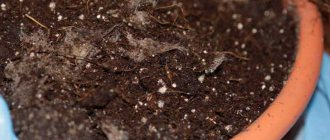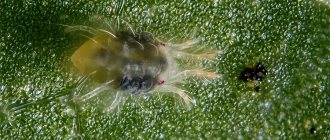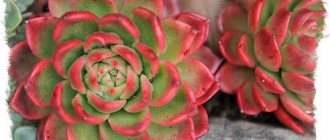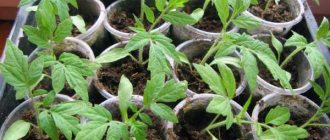There are a huge number of flowers in the world, and sometimes gardeners simply cannot choose varieties that will decorate their homes and gardens. Few people know, but in addition to ordinary peas, sweet peas also exist in nature. In turn, it not only looks beautiful, it exudes a pleasant aroma. It is precisely because of its appearance and smell that it is widely popular among gardeners who are not averse to decorating their terraces, balconies and gazebos with it.
Sweet pea or sweet pea is a climbing annual growing to a height of 1-2 m along the support.
Types and varieties of sweet peas
This plant belongs to the genus China of the Legume family. You can often hear the second name – China. Its natural habitat is the Mediterranean. The culture originates from Sicily and spreads to the island of Crete. Can often be found in central Russia.
The history of the discovery and spread of sweet peas dates back several centuries ago. It would be more accurate to say in the 18th century. It was discovered quite by accident when a Sicilian monk, while walking, came across an unknown grass under the walls of the monastery. He was amazed by the pleasant smell that the unknown flower emitted, so he collected the seeds and sent them to his good friend in England. Soon, breeders developed several new varieties and these plants conquered that era.
After that, they began to actively grow it and, thanks to the hard work of breeders and botanists, today there are more than 1000 species of sweet peas, which in turn are classified into separate groups. They all differ in:
- size;
- form;
- blossom.
At the moment, breeders continue to develop new varieties of this plant. Most often, gardeners and summer residents grow annual species. But in addition to this, it is possible to cultivate perennial varieties of peas.
The size depends on the type. From 20 cm semi-dwarf types and up to giant varieties, reaching 3.5 m in height. The plant grabs a support with its tenacious vine-like leaves and grows upward, filling the empty area.
The surprising thing is that each class has its own universal aroma . In nature, you can find flowers of any color, with the exception of yellow. Another specific quality is that one or another species cannot be crossed with each other. As a rule, growing this extraordinary flower at home does not take a particularly long time, but using this method allows you to observe earlier flowering.
Classification:
- Galaxy Group. This species was first created in the 50s of the 19th century and belongs to the late-flowering varieties. The height of plants in this group reaches 2 meters. They have from 5 to 7 double flowers. These plants are perfect for landscaping. The most famous varieties are Neptune (lilac-blue color) and Milky Way (milky-cream color). Neptune Milky Way Jumbo
- Spencer. A group of multi-stemmed plants up to 2 meters in size, which are also good for landscaping and cutting use. They consist of 3-4 simple flowers, turning into racemose inflorescences. They have a pink spectrum of color. This group includes: Warrior, Jumbo and Charlotte.
- The Early Spencer group belongs to the early varieties. These plants reach 120-150 cm, and inflorescences up to 35 cm.
Sweet pea Matukana has a new extraordinary, exciting aroma. - Duplex . The peculiarity of these plants is the presence of a double sail. One of the representatives of this group is Cream.
- Bijou. These are semi-dark late varieties. Can reach 45 cm. The group was created in 1963. The varieties differ from the rest in that they can be grown without supports.
- Cupido. A species of low-growing plants created in 1895. Their height is up to 30 cm.
Low-growing varieties of sweet peas - Cuthbertson-Floribunda . Early varieties were created in 1953. These plants reach a height of up to 2 m, and their large racemes consist of 5-6 flowers. This group includes flowers such as phlox subulate, Kennet, White Pearl.
- Royal Family . The peculiarity is that these crops are heat-resistant. They were created in 1964 and are considered the perfect version of the Cuthbertson-Floribunda. But these plants are too sensitive, so they are not grown in the cold season.
- Multiflora Gigantea. This class also belongs to the early varieties and grows up to 2.5 m. They were bred in the 60s of the last century. Excellent for cutting.
Sweet peas for cutting have a strong stem and retain freshness well in a bouquet. - Rufled is the owner of a strong stem, numbering from 6 to 10 flowers with a wavy sail in the brush. Popular varieties are Grace and Ramona.
- Intergen is a low-growing species that was bred in Russia in 1991. The length of the plants reaches 35-65 cm, which allows them to be grown without additional support.
- Lel. Introduced in the same year as Intergen. It is of medium size and reaches a height of up to 100 cm. Lucienne and Lisette are the most famous representatives of this class.
Terry sweet pea PINK PEARL
History of the fragrant rank
Before moving on to the topic of caring for and planting sweet perennial peas (a photo of it is presented in the article), we will look a little at the history of the plant. Its thickets can be found throughout Europe, South America, and some species can be found on the slopes of African mountains. They are fragrant gifts of nature. These plants, which reach a height of two meters, are bred mainly to decorate the garden plot.
The name of the plant in Latin is “latyrus odoratus”. “Odoratus” translates as “smell inhalation”, and the word “latyrus” was first used by the ancient Greek founder of botany, Theophrastus, and consists of two words: la – “very” and thoures – “attractive”.
There is an official version of the origin of this culture, which says that the English minister of religion, Francisco Cupani, more than three hundred years ago, while walking near the walls of his monastery located on the shores of the Mediterranean Sea, caught the pleasant smell of a plant unfamiliar to him.
In Russia in 1938, the Gribovskaya Experimental Breeding Station received several varieties of pea seeds from the English company Anwins, and a group of breeders under the leadership of Doctor of Agricultural Sciences Irina Dryagina began studying this crop. After 52 years, the first twenty varieties of domestic sweet peas appeared.
Perennial sweet peas (photo below), clinging with their tendrils to various supports, adorn the walls of balcony loggias and country houses. This is probably why the plant is popular among gardeners.
The reason for the demand for growing this type of plant is that pea flowers can tolerate spring and autumn frosts. Compared to other crops, which tend to twine around any support, fragrant china grows faster and has a long flowering period. Bouquets of flowers of different shades retain their freshness, smell and attractiveness for a long time. Some varieties of plants (low-growing) are used for flower beds.
Sweet peas can decorate any area
For your information! Currently, two-color varieties have also been developed, which are becoming increasingly popular.
Peas are a perennial, although in certain climatic conditions this fragrant flower is grown as an annual. In addition, thanks to the painstaking work of breeders, many annual varieties have appeared, which are represented by a more diverse range of colors.
Fragrant peas begin to bloom in late June - early July, but the duration of its flowering depends on how it is cared for. If you follow some simple rules, the plant will delight you with numerous flowers until frost.
Currently, two-color pea varieties have been developed
The stems of peas (peas) are ribbed, the leaves are complex, pinnate, and bright green. At the ends of the leaves there are tendrils, thanks to which the plant can curl, clinging to support. The height of this aromatic plant depends on what variety it is, and can vary from 15-20 cm to 2-2.5 m. The fruits of the tree are pubescent, not very long beans with several seeds.
Important! Sweet pea seeds are poisonous, so it is best to keep them away from children and animals.
How and when to plant sweet pea seedlings
It is permissible to plant the plant in both summer and winter. Planting dates are determined taking into account the region and method of planting. Before direct planting, the soil must be treated with solutions against parasites. It is recommended to sow seeds a month before planting in the ground.
You should prepare the necessary equipment, wait for a favorable time and follow the sequence of the landing algorithm.
Sowing is done at the end of March or beginning of April. The flowering period occurs in July and continues until the onset of frost.
Preparing containers and soil
First you need to select a container. Since they have a long root, plastic or peat cups with a volume of 200-250 ml are suitable. There must be drainage holes at the bottom of the container. If you don't have them, you need to do them.
To plant seeds, use universal soil or prepare the soil yourself. How to choose and prepare soil for seedlings
It should be well moistened, fertilized and drained.
In order to germinate seeds, you need:
- Place the material in a cotton cloth.
- Wrap it in cloth and put it in a plastic bag for several days. Store the package in a warm room at a temperature of 20-25 degrees.
- For better effect and faster germination of seeds, they can be soaked in solutions.
- You should check every day whether they have sprouted. And also make sure that the material does not dry out.
To increase the growth rate, you can use both organic solutions and various preparations. Organic fertilizers include aloe juice. Among the preparations you can use Zircon.
Plant growth stimulator
Sowing
Direct sowing of seedlings is carried out after careful preparation of everything necessary. To do this you need:
- Place drainage at the bottom of the container (if plastic glasses are used).
- After this, cover with soil so that 2 cm remains from the edge of the cup.
- Soak the soil well with warm water.
- Make small holes and place the seed there.
- Fill the top with a small amount of soil and water again.
- Cover the glass with a plastic bag to create a greenhouse effect.
Sweet pea shoots
Use in genetics
Gregor Johann Mendel is now considered the "father of modern genetics" due to his work on legume plant breeding (pea Pisum sativum
) with different properties, and sweet peas were used in the same way. The sweet pea is thus a model organism used in the early stages of genetic development, especially by genetics pioneer Reginald Punette. It is a very suitable plant as a genetic target because of its ability to self-pollinate and easily observable Mendelian traits such as color, height and petal shape. Many genetic principles have been discovered or confirmed using sweet peas. This was used by Punette in early studies of linked inheritance. An additional factor of inheritance was also confirmed in sweet peas when two white pure varieties were crossed to give rise to a blue hybrid, blue in color, requiring two genes derived independently from the two white ancestors. Like the blue rose, the yellow sweet pea remains elusive and unlikely without the use of genetic engineering.
Caring for seedlings at home
After sowing, the plant needs careful care. And therefore, compliance with all measures and rules provides a favorable environment for growth. Sprouts appear a few weeks after planting. Nodules begin to form with a slight temperature difference, so the seedlings are transferred to a cooler room and the cover is removed. The temperature should be from +15 to +17 degrees.
Some tips:
- It is advisable to place the seedlings on the south side so that the plant does not feel the lack of light. If there is not enough natural light, then you need to use artificial lighting for 2-3 hours every day.
- The soil should be constantly moist, so it is advisable to water it every week. To prevent drying out, you can cover the seedlings.
- Monitor the amount of water, because if you water too often, the roots may rot.
As for picking, the answer is simple. Not recommended!
Due to the fact that it is very sensitive, picking should be out of the question. Any manipulations carried out with its roots can lead to injury, so it is better not to touch the root system.
But feeding won't hurt. In this case, mineral fertilizers are perfect. Kemira solution has a beneficial effect on growth.
When the first three leaves appear, pinch the top to increase the shoots.
With proper and timely care and compliance with all rules, you can easily achieve favorable results. And after that, feel free to move on to the next part: planting in open ground.
When the first three leaves appear, pinch the top to increase shoots
Diseases and pests
Sweet pea diseases:
- Ascochyta blight - clearly defined brown spots appear on the surface of leaves, shoots and bean pods. It is necessary to treat the bushes 2-3 times with a solution of the Rogor preparation, observing intervals of 15-20 days between sprayings;
- Penosporosis (powdery mildew or downy mildew) - a whitish, loose coating forms on the leaves and shoots. The disease progresses, soon the leaves turn yellow, turn brown and fall off. To combat the disease, spraying with a 5% solution of colloidal sulfur is carried out;
- Fusarium wilt is a serious viral disease for which there is no cure. The leaves droop, turn yellow and wither. Such plants should be immediately pulled out and burned, and the planting site should be treated with TMDT solution. Prevention of the disease is the rotation of crops, proper planting and care;
- Black leg - the root collar area becomes dark. The same fusarium, only the disease more often affects seedlings and seedlings in open ground. The cause is waterlogging of the soil and lack of ventilation. Affected sprouts are immediately destroyed;
- Viral mosaic - the surface of the leaves is covered with a hatched pattern, the shoots are twisted and deformed in every possible way. There is currently no treatment against plant viruses, so they are removed from the site and burned.
Among the pests of sweet peas are three types of aphids (chin, bean, pea) and the nodule weevil.
Weevil larvae live in the ground and feast on sweet pea tubers. Adult pests gnaw semicircles along the edges of leaves. Immediately when planting seedlings, 100 ml of Chlorophos solution with a concentration of 0.1% is poured into each hole. The bushes are sprayed with the same drug in case of damage.
Any species of aphids are sucking insects and they have one “strategy”: in large groups they stick around young shoots and leaves, the plant quickly withers. The pest can also carry viruses for which there is no cure. It is better to treat the plantings 2-3 times in advance with a solution of the drug Zineb or Tsiramon for preventive purposes. Wait 15-20 days between sprayings.
When to transplant seedlings into open ground
As soon as the ambient temperature stabilizes within 15 degrees, you can begin transplanting the seedlings.
However, if the seedlings have already formed buds or flowers before planting, they will need to be removed. A week or two before planting in the soil, it is recommended to carry out hardening procedures so that the seedlings gradually get used to the outside temperature. Every day it is necessary to increase the duration of stay in the air. As soon as the young seedlings stand outside for a day, they can be transplanted into prepared soil. Rules:
- Seedlings should be planted in holes at a distance of 25 cm from each other.
- For tall varieties, supports must be prepared.
- Annual varieties should be disposed of in the fall. It should be remembered that if you plant annual varieties, they can only be planted again after 5 years.
- Since the seedlings are still too sensitive and are not fully accustomed to changing ambient temperatures, it is advisable to protect them from the sun in the first few days. To do this, it is enough to build a canopy to protect the plants from ultraviolet rays.
As soon as the ambient temperature stabilizes within 15 degrees, you can begin to transplant the seedlings into open ground.
Propagation by seeds and growing seedlings
Perennial sweet peas can be sown directly into the ground, but more often they are propagated by seedlings. Seed material is prepared in April. Seeds can be collected in your own garden or purchased in specialized stores. More often on sale are mixtures selected according to the height of the bush, but differing in the color and shape of the buds. If desired, you can also find varietal plants. You need to buy them from trusted suppliers who guarantee the authenticity and high quality of the seed.
Growing sweet peas from seeds is a very interesting and easy process that you can involve children in. With proper germination, failures are practically eliminated. First, the prepared material is sorted, rejecting ugly or too small specimens, the remaining ones are filled with hot water (temperature about 50 degrees). After a day, the floating hollow seeds are discarded and the liquid is drained from the glass. This procedure will help slightly soak the dense and hard shell and significantly increase germination.
The remaining specimens are placed in damp sand until seedlings appear. An alternative is to wrap the seed in a damp cloth, which must be constantly moistened. After pecking, the seeds are transplanted into previously prepared soil. Sweet peas prefer a light and nutritious substrate made from a mixture of garden soil, humus, sand and peat. Flowers can be grown in containers, but individual containers made of cardboard, plastic or peat are much more convenient. When replanting, the young plant is carefully removed from the cassette, the roots are not injured, and the flowers take root faster in the new location. Seedlings need to be watered with soft, settled water, preferably rainwater. No fertilizer is required; peas receive all the necessary nutrients from properly composed soil.
When the young seedlings grow to 15 cm, you can prepare them for moving to a permanent place in the garden or in balcony boxes. You should not delay replanting, as this may delay flowering. The best time to decorate flower beds is the beginning of May. Peas are not afraid of short-term night frosts. The earthen lump is carefully removed from the pot; you cannot shake off the soil from the roots or pull the seedlings by the stem. The plant is placed in a shallow hole and covered with soil. You should not bury it, as this may cause the stem to rot. After planting, the soil around is compacted with hands, and the plantings are watered with soft, settled water. When moved correctly, the plants quickly take root; flowering begins in the first ten days of July.
Planting before winter
An amazing phenomenon is that sweet pea seeds can be planted before winter. The seeds are resistant to low temperatures, get along well in cold soil and begin to germinate with the onset of spring.
Such flowers have a great advantage. Firstly, these sprouts harden over the winter and become resistant to temperature changes. Secondly, they bloom more luxuriantly and brightly in the summer. And the emanating aroma intensifies.
The planting system in winter is simple:
- A couple of weeks before frost, the ground is dug up and cleaned.
- When cold weather sets in, shallow furrows are made in the garden bed.
- Seeds are planted there at a distance of 5 cm and covered with earth.
- Then the bed is rolled up and left there for the winter.
And in the spring you will be able to observe the shoots and anticipate how the gardens will soon bloom beautifully and luxuriantly.
Sweet pea shoots in spring when sown before winter
Botanical description and homeland of the plant
Sweet pea (Lathyrus odoratus) or sweet pea is a perennial ornamental climbing plant of the Legume family.
A favorite of gardeners, the history of its cultivation dates back to the 18th century. In nature, the habitat extends from Sicily and east to the island of Crete. Some experts are inclined to believe that the birthplace of the flower is the Eastern Mediterranean, others believe that sweet peas were brought to Sicily by conquistadors from Peru and Ecuador.
How did the plant spread to Europe and beyond? In 1699, the Sicilian monk F. Cupani found a beautiful flowering bush at the foot of the temple, later collected the seeds of the plant and sent them to his friend school teacher in England. Already in 1800, thanks to the efforts of English breeders, 5 varieties were obtained; today their number exceeds 1 thousand. The flowers, original in structure, delicate, colorful and incredibly fragrant, inspired me to do this kind of work.
Sweet pea 'Sweet Dreams' photo
The official name of the plant is formed by the merger of two words, meaning “very attractive” and “fragrant” in translation. The first description of sweet pea was given by Carl Linnaeus in 1753. The root system of the tree is taprooted and highly branched, penetrating into the soil to a depth of 1.5 m. Like most legumes, it is characterized by symbiosis with nodule bacteria, which makes it possible to absorb nitrogen from the air.
The shoots are climbing, weakly branched, and cling to the support with tendrils. The leaves are green, oval-shaped with smooth edges, sessile. The flowering is lush, the corollas are comparable to fluttering moths. The British saw them as a boat with a sail: one large, wide oval petal stands like a sail, two side petals are smaller and resemble oars, and a couple of fused lower petals form a boat.
The fruits are represented by a small bivalve bean, inside of which there are 5-8 spherical seeds, flattened on the sides, their color is yellow, light green or black-brown. The germination of beans lasts 6-8 years.
When do sweet peas bloom?
Sweet peas bloom in July and the parade of colors lasts until frost, provided they are properly cared for. This heat-loving plant is cultivated as a summer plant in central Russia.
Caring for flowers in summer
First of all, it needs to be protected from drying out, waterlogging, sudden changes in temperature and strong ultraviolet rays. Having eliminated all these damaging factors, there is no doubt that the plant will not get sick and will bloom for a long time.
It is enough to follow a few rules:
- Water regularly with plenty of water and monitor soil moisture. Every week 1 m2 is watered with 30-35 liters of water. If the bushes are intended to collect seeds for the next season, they are watered less often.
- Weed the soil from time to time.
- Watch the support.
- Provide fertilizing. Without it, the condition of the bushes will not worsen, but it is preferable to carry it out. Fulfilling this point will not be superfluous. Feeding is carried out in 2 stages. Before flowering begins, it is fertilized with potassium sulfate. The second feeding occurs at the height of flowering. Apply Agricol or Rosa.
- Protect from pests.
The bushes themselves can cling to the underlying ledges, so in order for it to grow upwards calmly, it is planted next to fences, gazebos and terraces. Supports are also installed next to the plants if they are required.
It cannot be pruned. Only one procedure is carried out - cutting off wilted flowers.
Preparing seeds before planting
Pea seeds must be carefully prepared before planting.
Preparatory measures are as follows:
- the seeds are soaked in hot water, in which they are left throughout the night;
- subsequently, those seeds that have swollen should be used. Those that have surfaced are recommended to be thrown away;
- An alternative to soaking is to trim small parts of the seeds. To do this, it is important to use only sharp nail clippers or a stationery knife.
Growing
Sweet peas can be planted on the balcony in one of the following ways:
- seedling;
- sowing seeds directly into the ground.
Let's look at each of them separately:
By seedlings
With the first frost, the required amount of garden soil is brought onto the balcony and left there until spring. It is best to start planting fragrant china through seedlings in early spring. A week before the intended planting, the soil is brought into the apartment so that it warms up to room temperature. It is then mixed with a special peat mixture specifically designed for seedlings.
For reference!
If the peas are planted in the ground from the store, then the most suitable option would be “Universal” soil.
Planting seeds can be done in special containers or in ordinary plastic cups, having previously made drainage holes on their bottom.
After this, you can start preparing the seeds.
First of all, their germination is determined. To do this, the seeds need to be soaked in hot water (about 60º). Let us clarify that this only applies to dark-colored seeds, but light-colored ones are afraid of water. After about a day, the “pacifiers” float to the surface of the water. These seeds are thrown away, and the swollen ones from the bottom are transferred to some container, laid out on a damp cloth and covered with film.
For reference!
In order for the seeds to gain more moisture and germinate better, it is recommended to first pierce their shells using, say, a sharp needle, nail scissors, etc.
The container with the swollen seeds is stored in a warm place and ventilated regularly. Seeds usually germinate in three days, although it may take longer. Be that as it may, the next step is to plant the sprouted seeds into the soil.
Small holes about 30 mm deep are made in containers with soil, one seed is planted in them and sprinkled with soil.
For reference!
When planting in a container, leave a distance of 8 cm between the seeds.
Having completed planting, water the soil, after which the containers are covered with film.
After green shoots appear, the film is removed. Containers with sprouts are placed in a sunlit place.
The entire period before planting, seedlings need to be properly cared for:
- the temperature at the landing site should not be very high - within 20°;
- the balcony, if it is closed, must be ventilated periodically;
- seedlings need to be watered once or twice a week;
- Nitrogen fertilizers can be used for feeding;
- When the first leaves appear on the seedlings, they should be thinned out, and before planting, when the buds appear, it is better to remove the leaves.
Now we have come to the last stage - planting seedlings.
On the balcony, seedlings are planted in flowerpots, pots or boxes with a ball of earth. The landing procedure is carried out after warm weather sets in. The process itself has its own subtleties, since the root system of the rather fragile sprouts is not yet sufficiently developed, so it can be easily damaged.
A hole is made in the soil for the future plant, large enough to accommodate the sprout along with its earthen lump.
The sprout in the cup is watered generously, after which the container is cut with scissors to remove all the soil and transplanted into the prepared hole.
For reference!
If you need to plant several seedlings, the gap between them cannot be less than 200-250 mm. And exactly how much depends on the variety of sweet pea. When planting tall plants, there should be 4 pieces per 1 m2.
The adaptation period for freshly planted sweet peas is approximately two weeks, and during this entire time it is advisable to shade the sprouts. During the adaptation process, it is possible to stop the growth of sweet peas.
Growing fragrant china through seedlings has certain advantages:
- Sweet peas can be planted during the period most favorable to plant growth.
- It arrives on the balcony as a ready-made plant, which, compared to the seedling, is much more adapted to different climatic conditions.
- With this approach, flowering can be achieved earlier.
Sowing seeds in the ground
Flowering in this case will begin much later than when using seedlings. About a week before sowing, small containers with soil where the seeds will be sown are covered with film. This will allow the earth to warm up to room temperature.
After planting, the seeds are filled with water and waited until they germinate. It is better not to remove the film on the container during this time. After green sprouts appear, the seedlings are immediately planted in the main pot or flowerpot.
As you can see, planting sweet peas on the balcony is quite simple - no special preparation is required.
Features of care
Sweet peas are easy to care for. The main criteria in this process are: watering, timely fertilizing and arrangement of various supports.
If you want to saturate the flower with color, fertilizing should be done once a month. Good growth is ensured by removing spent buds and regularly pruning the plant.
Such activities will contribute to faster growth and strengthening of the plant. If necessary, it is advisable to add various supports that provoke high growth.
Watering
The favorable period for sweet peas is the rainy season. In normal weather conditions, watering the plant should be done once during the day.
At the same time, do not forget to check the condition of the soil in which the crop grows.
It is important to avoid excessive dryness and water stagnation. During the first month after planting, it is advisable to carry out regular watering, since during this period the roots will adapt to the new soil.
Weeding and loosening the soil
The process of soil weeding and loosening must be carried out with caution. Even a slight exposure of the roots is fraught with withering of the entire plant.
Removing weeds is easiest on damp soil. It is fashionable to loosen the soil periodically, which will provide the roots with an influx of fresh air.
In the case of growing sweet peas on heavy soils, the raised row method is used. It is also useful to mulch the soil, which will help block the spread of weeds and retain moisture during dry periods.
Top dressing
It is optimal to feed sweet peas twice a month. In order to ensure the growth of adventitious roots, you can use a substrate, which must be poured in a thin layer along the base of the plant stem.
In general, fertilizing is not a prerequisite for the growth of this crop.
However, in order to obtain a more aromatic and colorful harvest, fertilizers of organic origin should be used as top dressing in the form of:
- various composts;
- mixtures enriched with potassium components.
Important: avoid using nitrogen-based fertilizers. The plant is saturated with this mineral from the air.
Pruning inflorescences
When growing sweet peas, important attention should be paid to pruning the inflorescences, as this will help prolong flowering until frost.
Pruning should be carried out regularly, taking into account that the removal of flowers should be done after their final ripening. Flowers that have already bloomed should also be removed.
Sowing pattern and depth
Preparing the soil is the final stage in preparation. After this, you can proceed directly to planting, during which a number of nuances should be taken into account:
- Any suitable container is suitable for planting sweet pea seeds, for which you can use wooden boxes, special pots or even plastic cups.
- The planting depth should not exceed three cm, but the distance between seedlings should be 10 cm.
- At the end of sowing, you should water the soil generously, then cover it with film and place it in a place accessible to sunlight. The film allows you to achieve a greenhouse effect, with the help of which it becomes possible to control temperature conditions, as well as retain moisture in the soil.
Collection and storage
Collecting sweet pea seeds involves avoiding trimming a few flowering pods. Drying of the pods can be determined by their acquisition of a yellowish tint.
Then it becomes possible to collect flowers for their further use. At this stage you need to be extremely careful, since overexposure of the beans can lead to a brown color change and increased fragility. Then even the slightest touch can cause it to crumble.
The collected seeds must be placed in a bag made of fabric, and then placed in a dark place to dry. You can also dry the seeds by pouring them onto a dry surface in a dark place. Subsequently, the flowering life of the seeds can reach six years.











